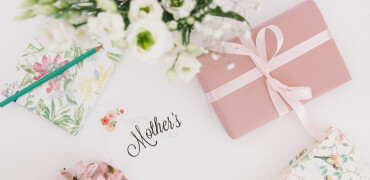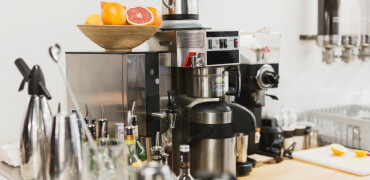Choice can be a fantastic thing, but it can also make choosing just about impossible. Remember the days when choice was only two models, in any colour so long as it's black? Unfortunately, it's not that easy anymore, particularly with cameras. Let's have a look at some of the things to consider, shall we? Lens size, resolution, video quality, screen size, preset options, manual options, interchangeable lenses, filters...The list goes on and on. A good read of this article should clear up some of the confusion, and make buying the perfect camera that much easier.
A run through of options
Before we explain all the different kinds of cameras available, it's important that you get a grasp of all the different terms. Not only will this make you sound more intelligent when you do decide to go shopping, it'll also help you figure out exactly what you need in a camera.
Zoom
Let's start with zoom - measured in multiples for point-and-shoots, and millimetres in SLRs. For example, if you were looking to buy a small, compact camera, then the zoom would be advertised as 3X (Or higher) zoom. If you were after a DSLR (more info down the page), then the zoom would be advertised in millimetres, as in 18-55 mm. Both of those examples (3X and 18-55 mm) are just that; examples. Zoom range can vary hugely, but it's not just a case of range.
Optical and digital are two different types of zoom, and digital is something you want to avoid, if possible. To put it simply, optical zoom is a physical magnification of the subject.Digital zoom basically crops the photo and then "enhances" the cropped image. The enhancement usually leaves much to be desired, and digital zoom results in a major loss of image quality.
Resolution
Next up we've got resolution, which is measured in megapixels, or MP. Strictly speaking, the more MP the better, but with most point-and-shoots you won't find a major difference between 12 and 18 megapixels, unless you plan on printing photos the size of Texas. It's not just megapixels that dictate resolution though - the size of the imaging sensor makes a big difference as well. To give you an example, a 14 megapixel point-and-shoot won't have photos with the same level of clarity as a 14 megapixel DSLR. As we said before though, unless your photos are going to be enormous, you're not going to notice a difference. And if you are planning on printing big photos, then you're probably more in the market for a DSLR than you are a point-and-shoot.
Video
Video is available on most photo cameras on the market, and it's available in a few different flavours. Standard definition, while not hugely common, is still used on some older or cheaper cameras. Not the greatest quality, but still viewable. You'd be far better off, however, to grab yourself a camera shooting in HD, either 720p or 1080p. 1080p is the highest resolution available on photo cameras, and 720p is just that little step below it. More and more cameras are coming with HD video on board, but if video is something you're specifically looking for, then make sure you check to see what kind of quality you're getting.
Manual modes
Not available in most point-and-shoots, but available in all decent DSLRs, manual modes give you control over all the aspects of your photograph. P is a "manual-automatic" function, where the camera chooses the shutter speed and aperture, while giving you control over other aspects of the picture. S, if you're a Nikon person, or Tv if you use Canon, is a shutter speed priority option, allowing you total control over the speed at which your camera's shutter opens and closes. This option is particularly useful if you're going to be photographing fast moving subjects, or dark subjects that require a lot of light, such as the moon and stars.
Next up is A (Nikon) and Av (Canon), which lets you control the aperture, while the camera does the rest. The aperture is basically how wide your camera lens opens to allow light in. A low aperture, such as F5.6, will give you a blurry background and foreground, while keeping the subject of the picture in focus. A higher aperture will keep more in focus, meaning you could have the background, foreground, and subject all in focus. A lower aperture, or F-stop, is also more useful for low-light conditions.
The last manual option is M, and this gives you absolute and total control over the entire camera; Shutter speed, aperture, ISO - it's all there, just a button press away. We wouldn't recommend using this mode unless you're photographing something static (as in not moving), since it can take a while to get the perfect settings. It could well be worth the effort, however, as we humans tend to know photography better than our cameras, funnily enough.
Point-and-shoot
Also known as compact cameras, these are the most common kind of digital camera. The options on these cameras are almost endless, and because of that, it's extremely hard to find your perfect snappy-match. Compacts like these are perfect for people who want something they can have on them all the time; something that'll slip straight into their pocket or handbag and not weigh them down. With starting prices of less than $100, they're also more affordable than their larger counterparts.
Compacts come in many different varieties - Tough compacts, zoom compacts, touch-screen compacts... The list is endless. If you want something rugged that'll put up with everything you throw at it (or everything you throw it at), then a tough camera could be perfect. The Panasonic Lumix DMC- TZ70 and FT6 are two great examples of cameras that can be tough and practical, while still packing in a huge amount of features. The Canon Ixus series are also great cameras for those wanting something super small that can still take some great shots, and also come with their fair share of techy bits.
Bridge cameras
Bridge cameras are a bit of a hybrid. Stuck between the portability of compacts and the customisability of DSLRs, these are a fantastic option for people looking for a big zoom, low-cost camera. Because of their larger size, the lens has a lot more reach, often up to 30X, compared to the average of 8X that most compacts have. They also feature a higher megapixel count, and more manual options than a compact. These extra features do come at a higher cost, but they're still very affordable, and you get an awful lot for your money.
If you're after something rugged and portable, these probably aren't for you. On top of that, a lot of bridge cameras also take AA batteries, unlike the rechargable camera-specific rechargable batteries that compacts and DSLRs come with as standard. Their added size and bulk makes them a less portable option, but that extra space is needed to accommodate the extra hardware that gives these cameras such a big zoom.
Digital SLRs
Also called DSLRs, short for Digital Single Lens Reflex, Digital SLRs cameras are the ultimate. Ultimate quality, ultimate speed, ultimate customisability. Unlike the other two breeds we've spoken about, DSLRs can be adjusted to suit your requirements by adding new lenses, giving you that little bit of extra reach, or providing the perfect macro lens. If you're looking at getting into big time photography, or have just started a new photography course at tech, then one of these is probably perfect for you. Generally, DSLRs come with at least one lens, and often come in a kit with two - a macro (close-up) lens, and a telephoto (zoom) lens. Nikon and Canon are the two behemoths in the DSLR range, and you'd do well to stick with either brand - It's a largely Holden-Ford kind of relationship. It is worth noting that lenses aren't interchangeable between brands, but are interchangeable between sa/me- brand models. So, if you've got a Canon EOS 700D, and decide to upgrade to the 7D, you'll be able to keep all your old lenses and just stick them on your new camera.
DSLRs take a bit of maintenance and aren't something you want to be biffing in your bag or chucking around too much. There's a lot of moving parts in these, and a lot of glass. That's not to say they're weak or fragile, but a bit of extra care doesn't go amiss. Investing in a decent bag and lens protector may cost you a bit now, but could save you an awful lot down the track.




